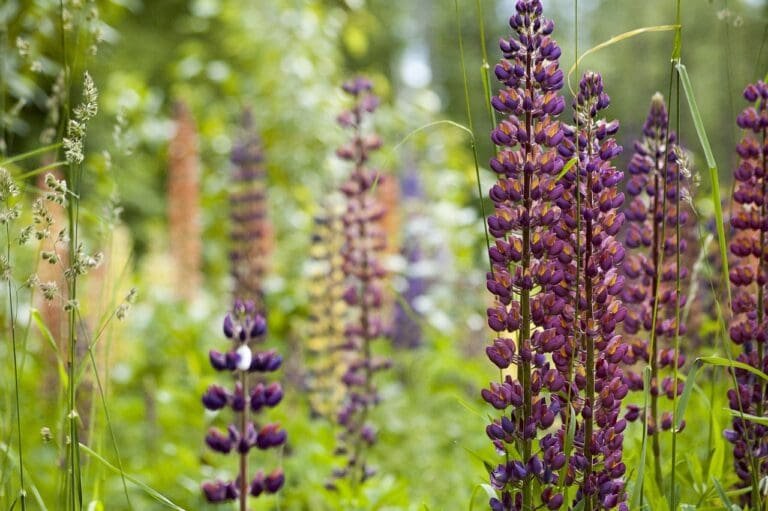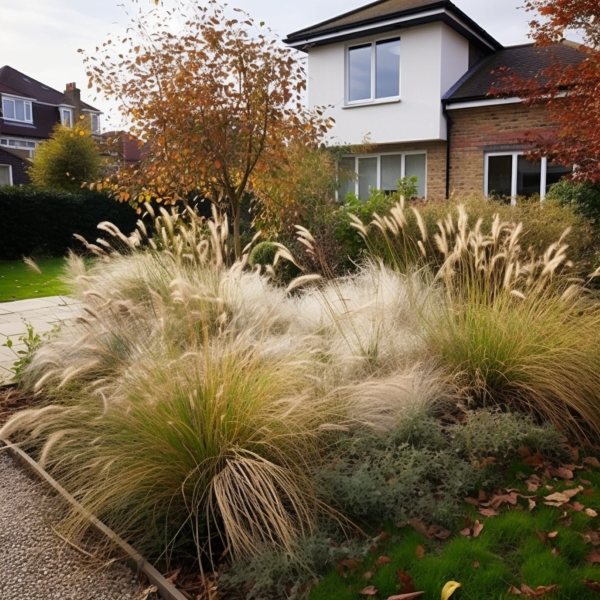You know how much we treasure our private oasis, our gardens, here in the UK. They’re our sanctuary, a space where we can relax and recharge. But for many of us, privacy can be a significant concern.
Luckily, nature offers a fantastic solution – pleached trees!
Through this post, we’ll delve into the magic of these unique trees and highlight some of the best pleached trees for achieving privacy in your UK garden.
This post contains affiliate links which means we may make commission from any qualifying sales with no extra cost to yourself.
Top Tip
For year-round privacy, opt for evergreen pleached trees as they maintain their foliage throughout the seasons.
Understanding Pleached Trees
Pleached trees, aka “hedges on stilts”, are trees that have been trained to provide a screen of branches and foliage. These natural barricades can be an absolute boon for those seeking solitude.
They not only grant you your personal hideaway but also add an element of green elegance to your space. When choosing your pleached tree, remember to consider factors like the tree’s growth rate, foliage density, and height.
Benefits of Using Pleached Trees in Your Garden
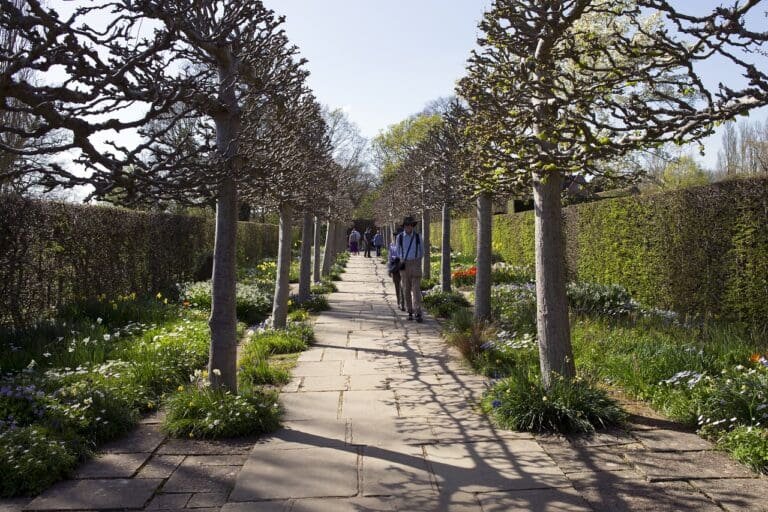
Pleached trees have been adorning gardens for centuries and their popularity continues to grow. Let’s delve into why these green screens can be such a magnificent addition to your garden:
1. Natural Privacy
Pleached trees create a natural screen that safeguards your privacy, allowing you to enjoy your garden in peace and seclusion. They’re the perfect alternative to traditional fences or walls, providing a beautiful and tranquil living boundary.
2. Space Saving
Given their vertical growth, pleached trees are a brilliant choice for smaller or narrower gardens where space is at a premium. They provide privacy and shade without taking up too much of your precious ground space.
3. Seasonal Interest
Many pleached trees offer a dynamic display throughout the seasons. From fresh, vibrant leaves in spring, to the beautiful color changes in autumn, and even winter interest with evergreens or trees that retain their leaves.
4. Noise and Wind Buffer
Besides privacy, these leafy barriers can also serve as a natural noise reducer, helping to dampen the sounds of traffic or noisy neighbours. Similarly, they can act as windbreaks, protecting more delicate plants in your garden.
5. Attract Wildlife
Pleached trees can be a haven for wildlife. Birds may nest in the branches and many creatures can benefit from the food source the trees provide, making your garden a lively and biodiverse environment.
6. Aesthetic Appeal
Pleached trees are not only functional but also incredibly beautiful. They add height, depth, and structure to your garden, which can be especially beneficial in the winter months when many other plants have died back. From formal to contemporary, pleached trees can fit into various garden designs, enhancing its overall charm and character.
Recommended Pleached Trees
Hornbeam (Carpinus betulus)

Let’s meet our first popular candidate – the Hornbeam. It’s a classic choice for pleaching, with its dense, serrated green leaves that transform to copper in the autumn. This hardy tree is forgiving, perfect for beginners, and thrives in most soils and conditions.
Remember to prune twice a year to maintain that pristine pleached look!
Beech (Fagus sylvatica)
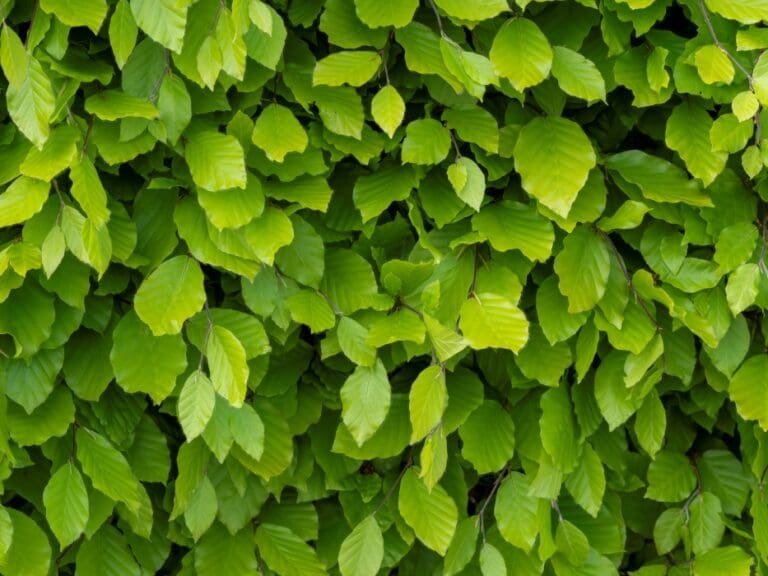
Another beautiful pleaching option is the Beech, with its vibrant green leaves that turn a stunning copper in the autumn. And the best part? The leaves stay on the tree in winter, ensuring year-round privacy! Beech trees are relatively low maintenance but remember, they do enjoy a good sunbathing spot.
Photinia (Photinia x fraseri) Red Robin
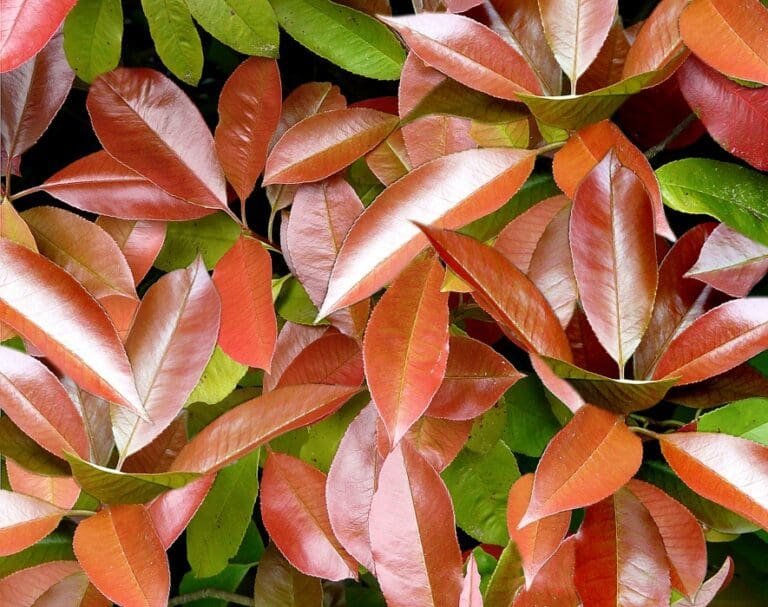
Fancy a touch of red in your green screen? Photinia is your pick. This evergreen, with its flush of red growth in spring, will definitely turn heads. Photinia prefers well-drained soil, and remember, those radiant red leaves love the sun!
Common Laurel (Prunus laurocerasus)

Say hello to the robust and glossy Common Laurel. This fast-growing evergreen is perfect for creating a dense, tall screen that blocks out all distractions. Laurel prefers a shaded or semi-shaded spot and adapts well to most soil conditions.
Elaeagnus Ebbingei Gilt Edge
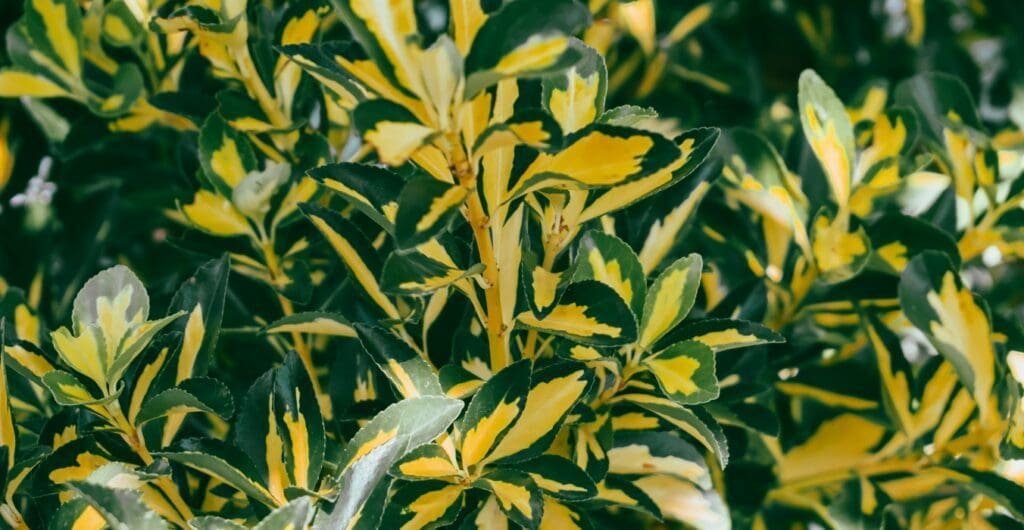
Elaeagnus Ebbingei ‘Gilt Edge’ is a versatile and visually appealing pleached tree option for UK gardens. With its dense foliage, vibrant golden-yellow margins, and year-round evergreen presence, it provides excellent privacy and adds an elegant touch to any garden space.
The fragrant autumn flowers and decorative berries further enhance its charm, making it a desirable choice for those seeking both privacy and aesthetic appeal in their outdoor oasis.
Additional Considerations
Remember, pleached trees require some commitment. Regular pruning is key to maintain their structure and form. Also, consider your garden’s design – a formal garden might be best paired with symmetrically pleached trees, whereas a more informal design might benefit from a freer form of pleaching. And why not consider complementing your green screen with other privacy-enhancing elements like trellises or garden sculptures?
Final thoughts
There you have it – a quick run-through of some of the best pleached trees for creating privacy in your UK garden. Each of these trees has its charm and brings something unique to the table, or rather, the garden. So why not give pleached trees a try and create your secluded green haven? Your garden is waiting!
Remember, every garden has its soul and character. So, choose the pleached tree that aligns with yours, and enjoy the peace and tranquillity it brings.
Happy gardening!
Frequently Asked Questions
Q. What are pleached trees?
Pleached trees, often referred to as ‘hedges on stilts,’ are trees trained to provide a screen of branches and foliage. They can be used to create green ‘walls’ or ‘screens’ for privacy and are especially ideal for small or narrow spaces.
Q. How do I maintain pleached trees?
Pleached trees generally require regular pruning to maintain their structure and form. This typically involves trimming back new growth and tidying up the shape of the tree. The frequency of pruning can vary depending on the specific tree species, but it usually ranges from once to twice a year.
Q. How long does it take for a pleached tree to provide full privacy?
The time it takes for a pleached tree to provide full privacy depends on the tree species, the initial size of the tree when planted, and the desired height of the screen. Generally, you can expect to wait between 3-5 years for a full, dense screen.
Q. Do pleached trees attract wildlife?
Yes, pleached trees can provide habitats and food for a variety of wildlife. For instance, birds can nest in the branches, and many species can benefit from the berries or seeds produced by the trees.
Q: Are pleached trees high maintenance?
Pleached trees generally require regular maintenance to ensure their optimal growth and appearance. This includes pruning to maintain the desired shape and size, as well as removing any dead or diseased branches. However, compared to other forms of privacy screening, pleached trees are often considered low to moderate maintenance. With proper care and occasional pruning, they can continue to thrive and provide privacy for many years.
Q: Are pleached trees expensive?
The cost of pleached trees can vary depending on factors such as the tree species, size, and quality. While there may be an initial investment involved, pleached trees are generally considered a long-term investment in enhancing privacy and aesthetics. The cost can be influenced by the number of trees needed, the complexity of the pleaching process, and the specific supplier or nursery. It is recommended to consult with local garden centers or landscapers to get accurate pricing information.
Q: Are pleached trees evergreen?
Many pleached tree species are evergreen, meaning they retain their foliage throughout the year. Evergreen pleached trees provide privacy and greenery even during the winter months when deciduous trees shed their leaves. Some popular evergreen options for pleached trees include yew, holly, and certain varieties of laurel and elaeagnus.


